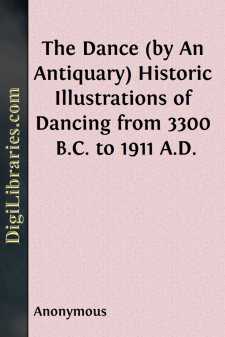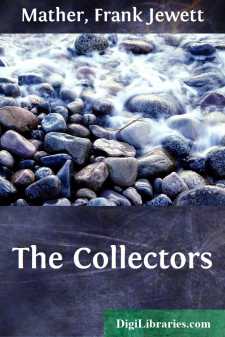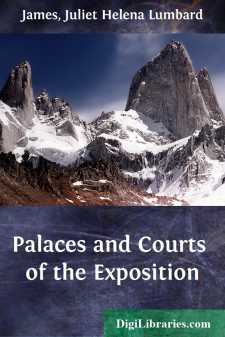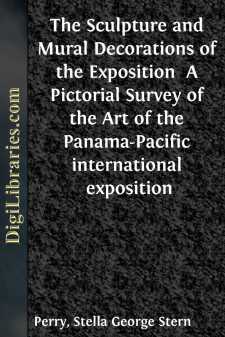Art
- African 1
- Asian 2
- Collecting 1
- Collections, Catalogs, Exhibitions 6
- Criticism 2
- European 8
- General 14
- History 11
- Middle Eastern 1
- Sculpture 4
Art Books
Sort by:
by:
Anonymous
CHAPTER I.Egyptian, Assyrian, Hebrew, and Phoenician Dancing. The Ritual Dance of Egypt. Dancing Examples from Tomb of Ur-ari-en-Ptah, 6th Dynasty, British Museum. Description of Dancing from Sir G. Wilkinson; of the Egyptian Pipes and Hieroglyphics of Dancing, &c. Phoenician Round Dances, from a Limestone Group found at Cyprus, and Bronze Patera from Idalium, Cyprus.In this work it is not necessary...
more...
by:
John Ruskin
THE NATIONAL GALLERY SITE COMMISSION. Evidence of John Ruskin, Monday, April 6, 1857. 114. Chairman. Has your attention been turned to the desirableness of uniting sculpture with painting under the same roof?—Yes. What is your opinion on the subject?—I think it almost essential that they should be united, if a National Gallery is to be of service in teaching the course of art. Sculpture of all...
more...
A BALLADE OF ART COLLECTORS Oh Lord! We are the covetous. Our neighbours' goods afflict us sore.From Frisco to the Bosphorus All sightly stuff, the less the more,We want it in our hoard and store. Nor sacrilege doth us appal—Egyptian vault—fane at Cawnpore— Collector folk are sinners all. Our envoys plot in partibus. They've small regard for chancel door,Or Buddhist bolts...
more...
by:
Kenyon Cox
ARTIST AND PUBLIC In the history of art, as in the history of politics and in the history of economics, our modern epoch is marked off from all preceding epochs by one great event, the French Revolution. Fragonard, who survived that Revolution to lose himself in a new and strange world, is the last at the old masters; David, some sixteen years his junior, is the first of the moderns. Now if we look for...
more...
There is a hill-crowned city by a silver sea, near a Golden Gate. For ages the water has washed from an almost land-locked bay against this hill-crowned city, and on its northern side has created of the shore an amphitheatre stretching for some three miles to the western headlands. Behind this amphitheatre rises, in terraces, the steep hills of this water-lashed city, and in part, a forest of pines...
more...
CHAPTER I The Duomo I: Its Construction The City of the Miracle—The Marble Companions—Twilight andImmensity—Arnolfo di Cambio—Dante's seat—Ruskin's "Shepherd"—Giottothe various—Giotto's fun—The indomitable Brunelleschi—Makers ofFlorence—The present façade. All visitors to Florence make first for the Duomo. Let us do the same. The real name of the Duomo is the...
more...
The Sculpture and Mural Decorations "In this fair world of dreams and vagary,Where all is weak and clothed in failing forms,Where skies and trees and beauties speak of change,And always wear a garb that's like our minds,We hear a cry from those who are aboutAnd from within we hear a quiet voiceThat drives us on to do, and do, and do." The persistent necessity for creation is strikingly...
more...
CHAPTER I THE DRAMATIC CRITIC His Qualifications The production of a play in the Russian tongue renders topical a phrase once used, not unhappily, by Mr Cecil Raleigh concerning the qualifications of the dramatic critic. After listening to a somewhat extravagant speech about the duties of the critic, he said that the dramatic critic ought, apparently, to be a "polyglot archangel." During the...
more...
by:
John Ruskin
PREFACE. 1. I must pray the readers of the following Lectures to remember that the duty at present laid on me at Oxford is of an exceptionally complex character. Directly, it is to awaken the interest of my pupils in a study which they have hitherto found unattractive, and imagined to be useless; but more imperatively, it is to define the principles by which the study itself should be guided; and to...
more...
by:
John Ruskin
Introduction Two conflicting tendencies in Ruskin. It is distinctive of the nineteenth century that in its passion for criticising everything in heaven and earth it by no means spared to criticise itself. Alike in Carlyle's fulminations against its insincerity, in Arnold's nice ridicule of Philistinism, and in Ruskin's repudiation of everything modern, we detect that fine dissatisfaction...
more...











